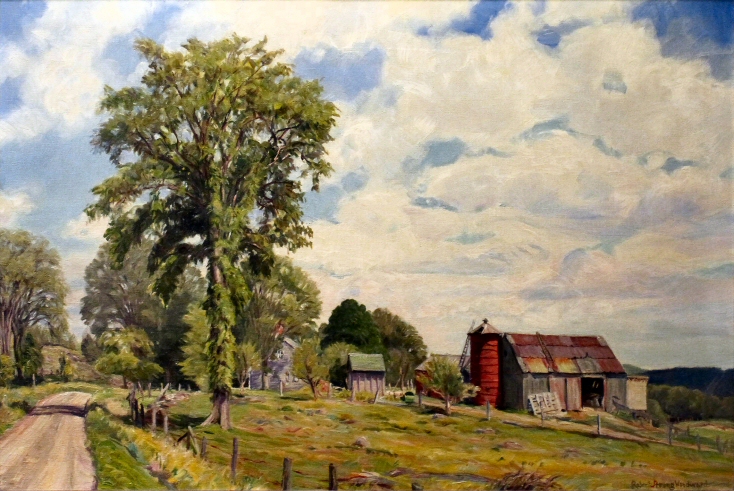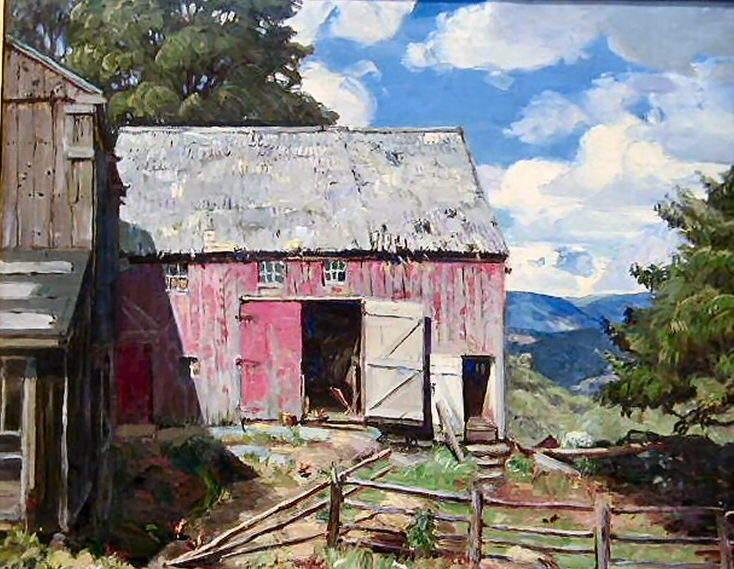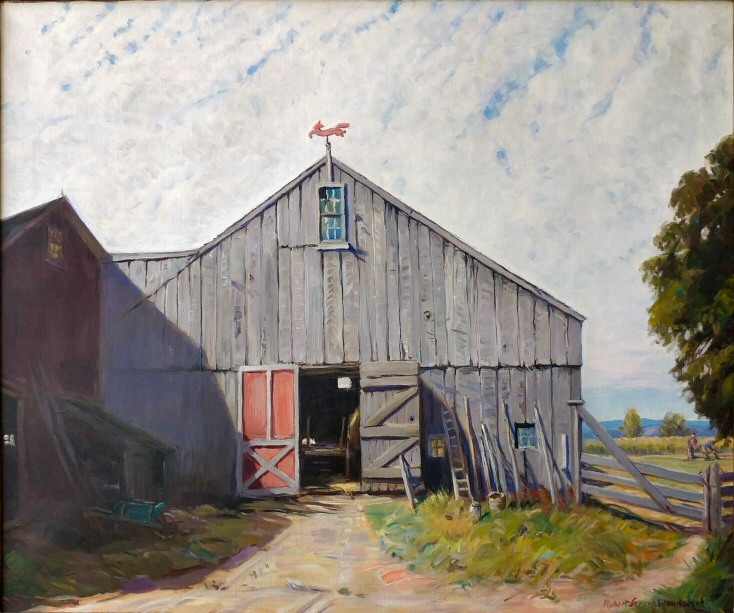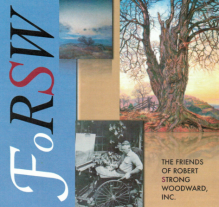Quick Reference
1918
Old Farm on Hog Hollow Rd.
Buckland, MA
Oil on Canvas
Landscape
Farm, Landscape & Views, and
Purinton Hill
25" x 30"
Unknown
Unknown
NA
Featured Artwork: A Buckland Farm
RSW's Diary Comments

 Winter Diginity, c. 1930, is one of 3 known ver-
Winter Diginity, c. 1930, is one of 3 known ver-
sions of Purinton Hill from Johnson Hill. In the painting
above you can see Purinton Hill in the distance from the
back of the Toy Farm on Putt's Hill in Buckland. RSW
likely painted this scene from just of the farm.
There are no diary comments for this painting which is not unusual for the first period years of Woodward's career. He did not begin compiling a diary until the 1940s, mostly from memory. This painting does not have a known name. It name is given by its new owners.
Editor's Note:
This painting appeared at an art dealer show in New York City and made some noise. It was sold for the second highest known price for a Woodward to a private collector. Interesting enough is the subject, a farm Woodward would paint again in 1930 and win a gold medal. But also its style and appearance. The website feels there is a strong influence of Gardner Symons who we know encouraged the budding landscapist to enter his work in exhibits in Boston and the Nation Academy in New York. There is something about the coloring that feels influenced by Symons.
Additional Notes

 The 1930 painting New England Drama side by side with this page's painting Buckland Farm, pre-1920.
The 1930 painting New England Drama side by side with this page's painting Buckland Farm, pre-1920.
① The House: The windows and chimneys all match and while the porch is blocked by the small shed
( #2). It lines up correctly. In fact, there are two other buildings not visible at all in the painting and
highlighted in the image of New England Drama (to the left).
② The Small Shed: Appears to be the same color, size and location in both paintings, though the fence
is covered by snow in New England Drama.
③ The "L" of the long barn: Though a number of the building are different colors, the house is not
painted white, the barns are not uniform like they are in New England Drama. It simply demonstrates
that between 1920 and 1930 the farm was fixed up and painted. Perhaps BECAUSE Woodward
painted it, the owner knew it was needed.
④ The Long Sloped Barn: Here we can see that a portion of the roof's long slope is an annexed add-
ition, whereas it is hidden under snow in New England Drama. All of the building was painted the
same by 1930.
⓪ The Circled Barns: It is clear that the barn in 1920 is NOT the barn of 1930 because the 1930 barn
is connected to the The Long Sloped Barn and the 1920 barn is separate, therefore the 1930 barn is
a new barn built during the 1920s.
✽ Highlighted in Purple: In the distance is Purinton Hill, the subject of the paintings Winter Dignity
Dignity of Winter, and Snow Symphony (seen above). The difference in directions between Buckland
Farm and New England Drama is as follows: New England Drama is looking south towards Ashfield
and Ashfield Mountain and Buckland Farm is looking west towards Charlemont and the Deerfield
River.




.png)

734.png)